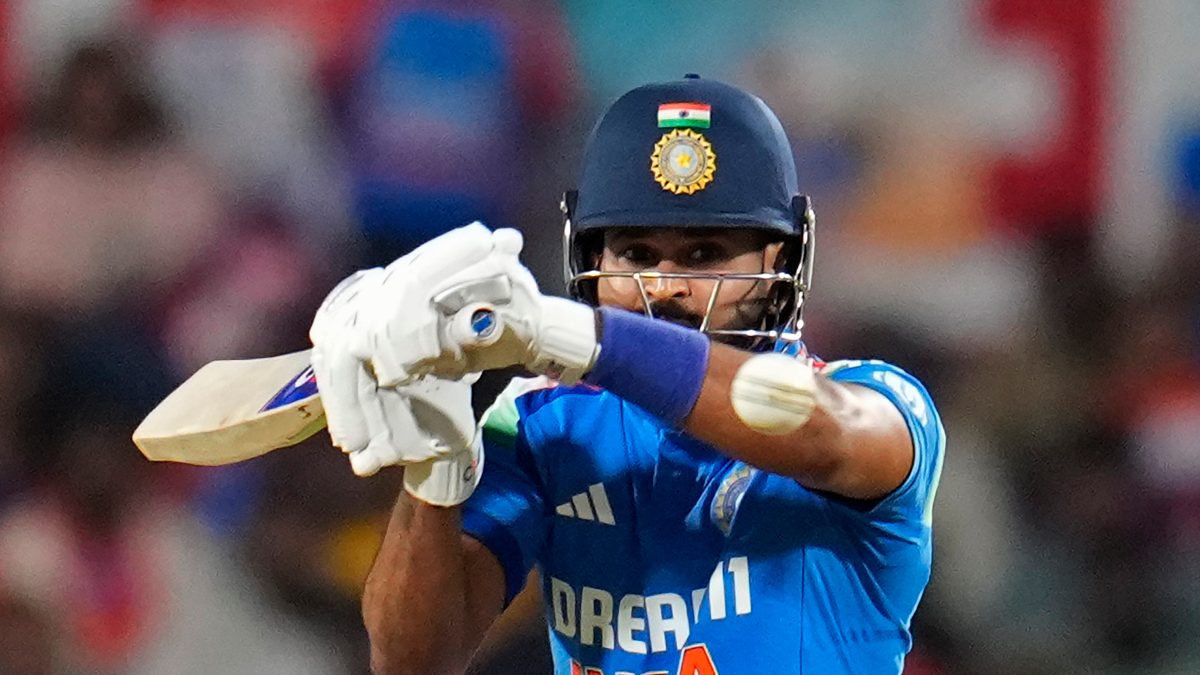Shreyas Iyer was not even supposed to play in the first One-Day International (ODI) against England in Nagpur. If not for Virat Kohli’s unfortunate knee swelling, he might have been watching from the side-lines. But fate had other plans. A late-night call from captain Rohit Sharma changed everything, giving Iyer an unexpected opportunity to showcase his worth.
“I was watching a movie last night,” Iyer told the broadcaster after the game on Thursday. “I thought I could extend my night, but then I got a call from skipper saying that you may play because Virat has got a swollen knee. And then [I] hurried back to my room, went off to sleep straightaway.”
And when the opportunity arrived, Iyer grabbed it with both hands, delivering a game-changing counter-attacking knock that not only secured India’s victory but also reignited the conversation about his place in the ODI setup .
Returning to international cricket after six months, Iyer (59 off 34 balls) announced his comeback in style at the Vidarbha Cricket Association (VCA) Stadium against a quality English attack. His explosive half-century was the turning point in India’s chase of 249, coming at a time when the England pacers had their tails up, having dismissed both Indian openers—Yashasvi Jaiswal and Rohit Sharma—early. With India under pressure and Kohli missing, Iyer seized the moment, counter-attacking with intent and shifting the momentum in India’s favour. Eventually, at the end of the day, the hosts wrapped up the chase with 11.2 overs to spare, taking a 1-0 lead in the three-match series.
Iyer: A key figure in India’s middle order
Iyer’s approach was fearless. Walking in at 19/2 in the sixth over, he immediately took on England’s most potent pacer, Jofra Archer. In an electrifying passage of play, he dispatched Archer for back-to-back sixes—a powerful pull over midwicket followed by an audacious uppercut over third man. His innings, laced with eight boundaries and two towering sixes, was a statement in itself. Reaching fifty in just 30 balls—his second-fastest in ODIs—Iyer silenced his critics and reaffirmed his reputation as a key figure in India’s middle order.
“As you all know I wasn’t supposed to play today. Virat unfortunately got injured and then I got the opportunity. I kept myself prepared. I knew that at any point of time I can get a chance to play. The same thing happened with me last year as well during the Asia Cup. I got injured and someone else came in and scored a century,” Iyer said.
Impact Shorts
More ShortsHis 94-run counter-attacking partnership with Shubman Gill for the third wicket ensured that England never had a chance to claw back into the game . This was Iyer’s 19th half-century in ODIs, but perhaps one of the most significant for his career, given the circumstances surrounding his place in the XI.
Iyer has been hard done by of late, having been dropped from the BCCI’s central contract list for the 2024-25 season. The decision reportedly stemmed from concerns over his participation in domestic cricket. However, since that setback, Iyer has been a regular feature in domestic tournaments, making a strong case for himself and looking increasingly comfortable in the middle.
Notably, in the last ODI World Cup at home, Iyer was one of the premier batters in the middle-overs, showing intent and keeping the scoreboard moving at a rapid pace. During India’s run to the final of the 2023 World Cup, batting at No.4, Iyer scored 530 runs at an average of 66.25, with two hundreds, including a 70-ball 105 in the semi-final against New Zealand. His strike rate of 113.24 was the best among India’s middle-order batters, underlining his importance to the team.
Iyer’s spin-playing ability gives him an edge
With the Champions Trophy set to begin on February 19, this series against England serves as India’s final opportunity to fine-tune their squad. The decision to start with Jaiswal ahead of Iyer hints at India’s preference for a left-right combination in the batting order. If Jaiswal plays as a regular opener alongside Rohit and Gill occupies the No.3 spot, it could push Kohli to No.4. That leaves Iyer competing for a place in a middle order that could include Axar Patel, KL Rahul and Hardik Pandya.
However, Iyer’s ability to tackle spin and accelerate in the middle overs makes him invaluable, especially in subcontinental conditions. More importantly, he appears to have addressed his struggles against the short ball. His technique looked solid against pacers like Archer and Saqib Mahmood, with his head staying still while playing horizontal-bat shots—an encouraging sign for Indian fans ahead of the Champions Trophy on those sticky pitches in Dubai, which could pose similar challenges.
Now, the big question remains: what happens when Kohli returns? Does Iyer’s heroics in Nagpur force a rethink in India’s batting plans? The next two ODIs might provide some clarity, but one thing is certain—Shreyas Iyer has reminded everyone why he is a necessity in India’s ODI setup.
)